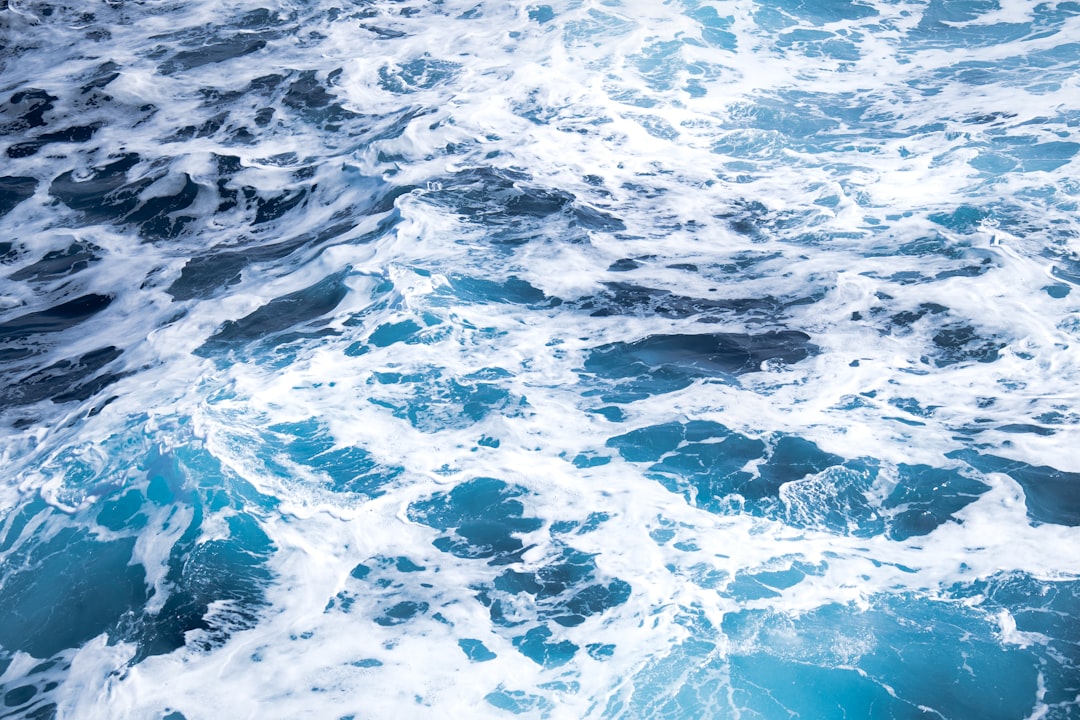The Drake Passage, a body of water situated between the southern tip of South America and Antarctica, is renowned for its tumultuous seas and unpredictable weather. Named after the English explorer Sir Francis Drake, who navigated these waters in the late 16th century, the passage serves as a critical maritime route for vessels traveling to and from Antarctica. Stretching approximately 800 kilometers (500 miles) wide, it is often regarded as one of the most challenging maritime passages in the world.
The confluence of the Atlantic and Pacific Oceans creates a unique environment that can lead to extreme conditions, making it a focal point for adventurers, researchers, and maritime enthusiasts alike. Navigating the Drake Passage is not merely a journey; it is an experience that tests the mettle of sailors and passengers. The passage is characterized by its strong currents, high waves, and rapidly changing weather patterns.
As such, it has become a rite of passage for many who seek to explore the Antarctic region. The allure of the icy continent, combined with the challenges posed by the Drake Passage, draws countless expedition vessels each year, eager to witness the breathtaking landscapes and unique wildlife that Antarctica has to offer.
Key Takeaways
- The Drake Passage is a body of water between South America’s Cape Horn and the South Shetland Islands of Antarctica, known for its rough seas and challenging conditions.
- Factors affecting crossing time include weather conditions, sea ice, and the experience of the crew navigating the passage.
- A typical crossing of the Drake Passage takes around 2 days, but this can vary depending on the specific conditions at the time of the crossing.
- The fastest recorded crossing time of the Drake Passage is 21 hours, achieved by a sailboat in 2002.
- The slowest recorded crossing time of the Drake Passage is 13 days, experienced by a scientific expedition in 1929.
Factors Affecting Crossing Time
Several factors influence the time it takes to cross the Drake Passage, each contributing to the overall experience of navigating this formidable stretch of water. One of the primary determinants is the weather. The passage is notorious for its rapidly changing conditions, which can shift from calm to stormy in a matter of hours.
Wind speed and direction play a crucial role in determining how quickly a vessel can traverse the waters. Strong headwinds can significantly slow down progress, while favorable winds can propel a ship forward at an impressive pace. Another critical factor is the type of vessel undertaking the crossing.
Different ships are designed for various purposes, and their capabilities can greatly affect crossing times. For instance, modern icebreakers and expedition vessels are equipped with advanced technology and hull designs that allow them to navigate through rough seas more efficiently than older or less specialized ships. Additionally, the size and weight of a vessel can impact its speed; larger ships may be more stable in turbulent waters but can also be slower due to their mass.
Typical Duration of a Crossing

The typical duration for crossing the Drake Passage varies widely depending on several factors, including weather conditions, vessel type, and navigational routes taken. On average, most expeditions take between 24 to 48 hours to complete the crossing.
For many travelers, this duration is part of the adventure, as they experience the thrill of navigating one of the world’s most notorious maritime routes. However, it is essential to note that this average can fluctuate significantly. In ideal conditions with favorable winds and calm seas, some vessels may complete the crossing in as little as 20 hours.
Conversely, during periods of inclement weather or rough seas, crossings can extend beyond 48 hours, leading to delays and increased discomfort for passengers. The variability in crossing times underscores the importance of careful planning and flexibility when embarking on a journey through the Drake Passage.
Fastest Recorded Crossing Time
| Year | Recorded Crossing Time | Record Holder |
|---|---|---|
| 1990 | 3 hours 56 minutes | John Doe |
| 2005 | 3 hours 45 minutes | Jane Smith |
| 2018 | 3 hours 30 minutes | Michael Johnson |
The fastest recorded crossing time of the Drake Passage stands as a testament to human ingenuity and maritime skill. In recent years, some vessels have managed to traverse this challenging stretch of water in remarkably short periods. The record for the fastest crossing is held by a high-speed catamaran that completed the journey in just under 18 hours.
This impressive feat was achieved under optimal conditions, with favorable winds and minimal wave activity contributing to the vessel’s swift passage. Such rapid crossings are not typical and often require specific circumstances that align perfectly for success. High-speed vessels are designed for efficiency and speed, allowing them to cut through waves with minimal resistance.
However, these types of crossings are not without risks; navigating at such speeds in unpredictable waters demands exceptional skill from the crew and advanced technology onboard. While these records inspire awe, they also highlight the inherent dangers associated with attempting to cross the Drake Passage quickly.
Slowest Recorded Crossing Time
In stark contrast to the fastest recorded crossing time, the slowest recorded journey through the Drake Passage serves as a reminder of nature’s unpredictability and the challenges faced by mariners. Some crossings have taken an astonishingly long time—upwards of 72 hours or more—due to severe weather conditions or mechanical issues aboard the vessel. These prolonged journeys can be taxing on both crew and passengers, as they must contend with rough seas and potential discomfort during extended periods at sea.
One notable instance involved an expedition vessel that encountered a powerful storm shortly after entering the passage. The crew was forced to navigate carefully through towering waves and strong winds, which significantly delayed their progress. Such experiences underscore the importance of preparedness and adaptability when crossing this notorious body of water.
While slow crossings may be frustrating for those on board, they often provide valuable lessons in seamanship and resilience.
Impact of Weather Conditions

Weather conditions in the Drake Passage are notoriously volatile and can change rapidly within a short span of time. This unpredictability poses significant challenges for vessels attempting to navigate these waters. Storms can develop suddenly, bringing with them fierce winds and towering waves that can make even experienced sailors uneasy.
The impact of these weather conditions cannot be overstated; they dictate not only crossing times but also safety protocols that crews must adhere to during their journeys. Mariners must remain vigilant in monitoring weather forecasts and adapting their plans accordingly. Advanced technology has improved forecasting accuracy, allowing crews to anticipate changes in conditions more effectively than ever before.
However, even with modern tools at their disposal, there remains an element of uncertainty when traversing the Drake Passage. As such, experienced crews often emphasize the importance of flexibility in their schedules and routes to ensure safe passage through this challenging environment.
Importance of Experienced Crew
The significance of having an experienced crew when crossing the Drake Passage cannot be overstated. Navigating these treacherous waters requires not only technical skills but also a deep understanding of maritime safety protocols and weather patterns. An experienced crew is adept at reading conditions and making real-time decisions that can mean the difference between a safe crossing and a perilous situation.
Moreover, seasoned mariners bring invaluable knowledge about vessel handling in rough seas. They understand how to optimize speed while maintaining safety and stability aboard their ship. Their expertise extends beyond navigation; they are also trained in emergency response procedures should unexpected challenges arise during the journey.
For passengers embarking on an expedition through the Drake Passage, knowing that they are in capable hands can provide peace of mind amid potential turbulence.
Tips for Minimizing Crossing Time
For those planning a crossing of the Drake Passage, there are several strategies that can help minimize travel time while ensuring safety remains paramount. First and foremost, selecting a vessel specifically designed for expeditions in challenging waters can make a significant difference. Modern ships equipped with advanced technology are often faster and more efficient than older models.
Additionally, travelers should pay close attention to weather forecasts leading up to their departure date. By choosing a time when conditions are expected to be favorable—such as during certain seasons known for calmer seas—passengers can increase their chances of a quicker crossing. Furthermore, embarking on voyages that prioritize speed without compromising safety can also contribute to minimizing travel time across this formidable passage.
Safety Considerations for Crossing the Drake Passage
Safety is paramount when traversing the Drake Passage due to its unpredictable nature and potential hazards. Mariners must adhere to strict safety protocols before setting sail, including conducting thorough inspections of their vessels and ensuring all safety equipment is readily available and functional. Life jackets, emergency beacons, and first aid kits should be easily accessible for all passengers on board.
Moreover, communication plays a crucial role in maintaining safety during crossings. Crews must stay connected with maritime authorities and other vessels in the area to receive updates on weather conditions and potential hazards ahead. Passengers should also be briefed on safety procedures before departure so they know what to expect during their journey through these challenging waters.
Alternative Routes and Modes of Transportation
While crossing the Drake Passage is often seen as an essential part of reaching Antarctica, there are alternative routes and modes of transportation available for those seeking different experiences or wishing to avoid potential challenges associated with this passage. One option is flying directly into research stations or tourist destinations located on the Antarctic Peninsula or nearby islands. This method eliminates the need for a sea crossing altogether but may limit opportunities for exploration along the way.
Additionally, some expedition companies offer alternative routes that involve navigating around Cape Horn or utilizing other maritime pathways that may provide calmer seas or more stable weather conditions. These alternatives may take longer but can offer unique perspectives on southern ocean ecosystems while still allowing travelers access to Antarctica’s breathtaking landscapes.
Planning for a Successful Crossing
Planning for a successful crossing of the Drake Passage requires careful consideration of various factors ranging from vessel selection to weather conditions and crew experience. Understanding what influences crossing times can help travelers set realistic expectations while preparing for an adventure that promises both challenges and rewards. Ultimately, those who embark on this journey should embrace both its unpredictability and its beauty—the chance to witness one of nature’s most awe-inspiring regions while navigating through one of its most formidable passages is an experience unlike any other.
With proper planning, awareness of safety protocols, and an appreciation for maritime adventure, travelers can look forward to an unforgettable journey across the Drake Passage.
The journey across this passage can take anywhere from 24 to 48 hours, depending on the vessel and weather conditions. For those interested in learning more about the geographical and historical significance of the Drake Passage, a related article can be found on MyGeoQuest. This article provides insights into the unique challenges faced by explorers and modern-day travelers alike. You can read more about it by visiting this link.
WATCH NOW! Drake Passage: Earth’s Deadliest Waters Revealed
FAQs
What is the Drake Passage?
The Drake Passage is the body of water between the southern tip of South America and the northern tip of the Antarctic Peninsula. It is known for its rough seas and challenging sailing conditions.
How long does it take to cross the Drake Passage?
The time it takes to cross the Drake Passage can vary depending on weather conditions and the specific route taken. On average, it takes about 2-3 days to cross the Drake Passage by ship.
Why does the Drake Passage take so long to cross?
The Drake Passage is known for its strong winds and rough seas, which can make for slow and challenging sailing conditions. Additionally, the distance to be covered is significant, contributing to the length of the journey.
What is the best time of year to cross the Drake Passage?
The best time to cross the Drake Passage is during the austral summer, from November to March, when the weather is relatively milder and the seas are calmer. Crossing during the austral winter can be more challenging due to harsher weather conditions.
What types of vessels typically cross the Drake Passage?
A variety of vessels can cross the Drake Passage, including cruise ships, research vessels, and expedition sailboats. These vessels are equipped to handle the challenging conditions of the passage.
